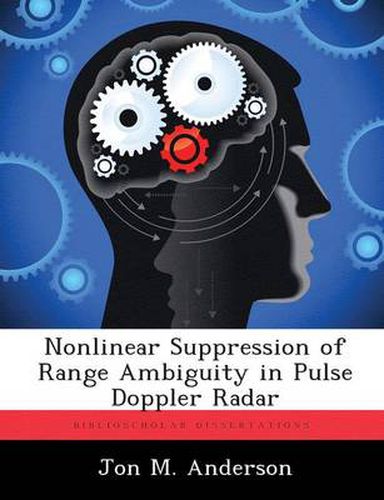Readings Newsletter
Become a Readings Member to make your shopping experience even easier.
Sign in or sign up for free!
You’re not far away from qualifying for FREE standard shipping within Australia
You’ve qualified for FREE standard shipping within Australia
The cart is loading…






This title is printed to order. This book may have been self-published. If so, we cannot guarantee the quality of the content. In the main most books will have gone through the editing process however some may not. We therefore suggest that you be aware of this before ordering this book. If in doubt check either the author or publisher’s details as we are unable to accept any returns unless they are faulty. Please contact us if you have any questions.
Coherent pulse train processing is most commonly used in airborne pulse Doppler radar, achieving adequate transmitter/receiver isolation and excellent resolution properties while inherently inducing ambiguities in both Doppler and range. As first introduced by Palermo in 1962 using two conjugate LFM pulses, the primary nonlinear suppression (NLS) objective involves reducing range ambiguity, given the waveform is nominally unambiguous in Doppler, by using interpulse and intrapulse coding (pulse compression) to discriminate the received ambiguous pulse responses. By introducing a nonlinear operation on compressed (undesired) pulse responses within individual channels, ambiguous energy levels are reduced in channel outputs. The proliferation of high-speed digital signal processing capability and discrete code development occurring since 1962, greatly improves the feasibility of implementing NLS using code sets of multiple codes.
$9.00 standard shipping within Australia
FREE standard shipping within Australia for orders over $100.00
Express & International shipping calculated at checkout
This title is printed to order. This book may have been self-published. If so, we cannot guarantee the quality of the content. In the main most books will have gone through the editing process however some may not. We therefore suggest that you be aware of this before ordering this book. If in doubt check either the author or publisher’s details as we are unable to accept any returns unless they are faulty. Please contact us if you have any questions.
Coherent pulse train processing is most commonly used in airborne pulse Doppler radar, achieving adequate transmitter/receiver isolation and excellent resolution properties while inherently inducing ambiguities in both Doppler and range. As first introduced by Palermo in 1962 using two conjugate LFM pulses, the primary nonlinear suppression (NLS) objective involves reducing range ambiguity, given the waveform is nominally unambiguous in Doppler, by using interpulse and intrapulse coding (pulse compression) to discriminate the received ambiguous pulse responses. By introducing a nonlinear operation on compressed (undesired) pulse responses within individual channels, ambiguous energy levels are reduced in channel outputs. The proliferation of high-speed digital signal processing capability and discrete code development occurring since 1962, greatly improves the feasibility of implementing NLS using code sets of multiple codes.